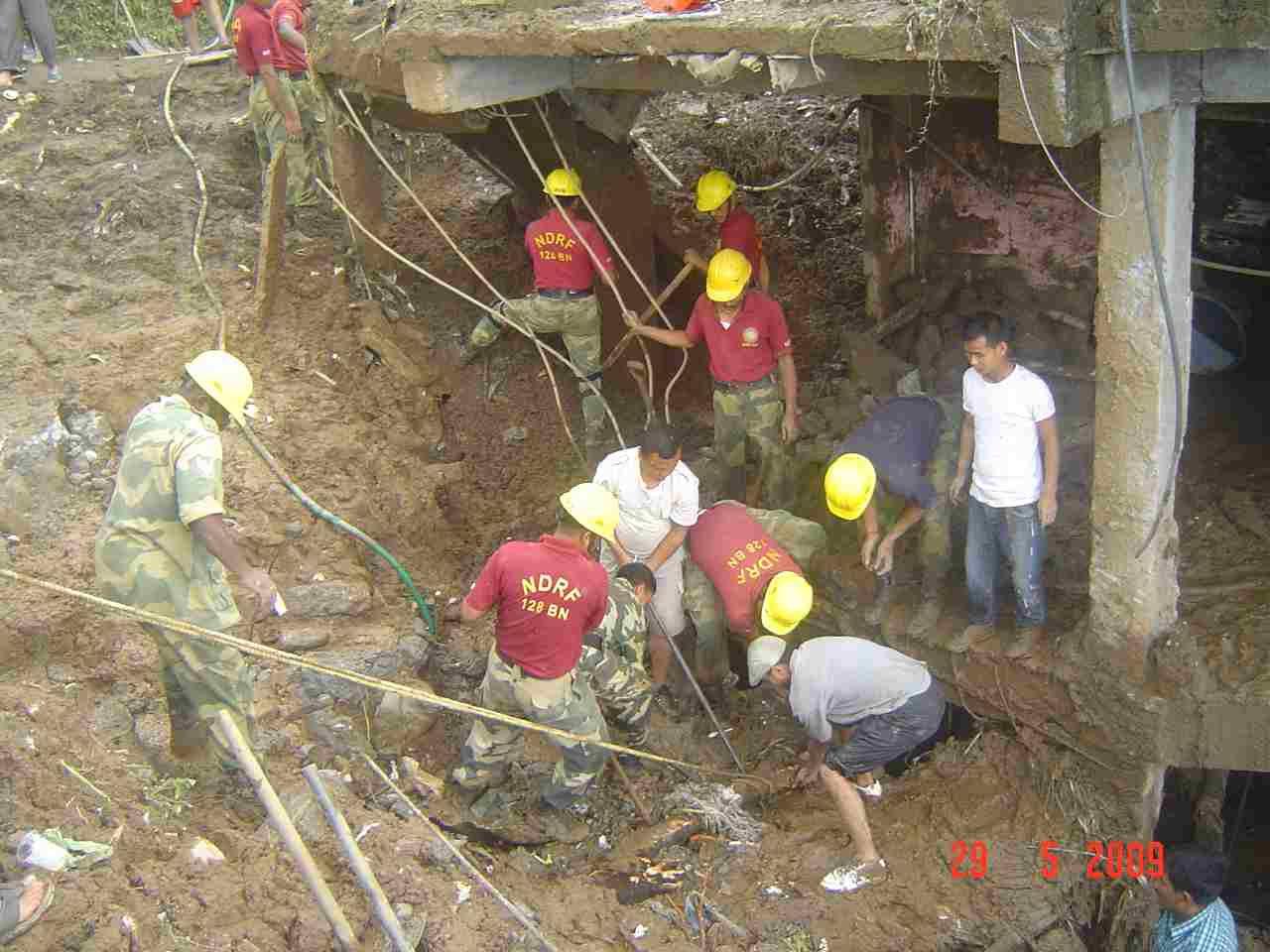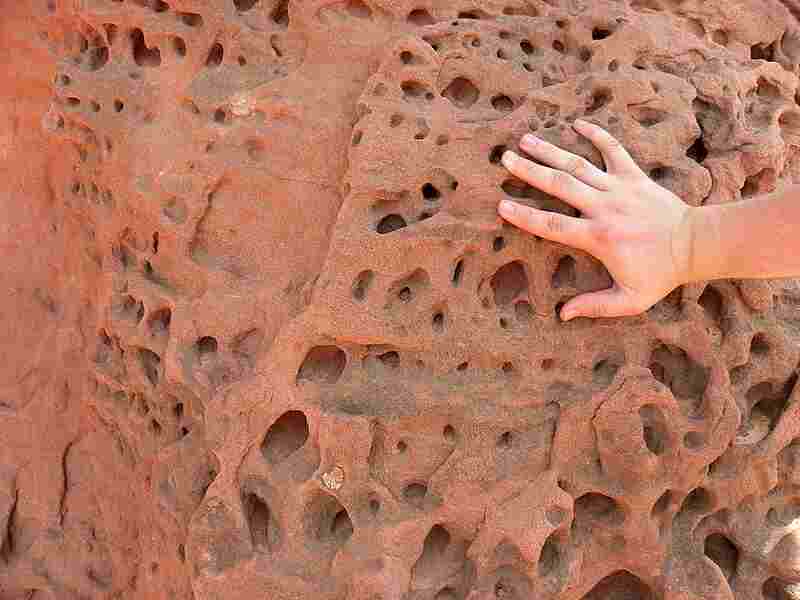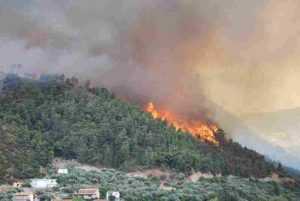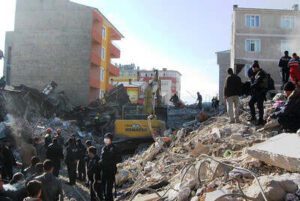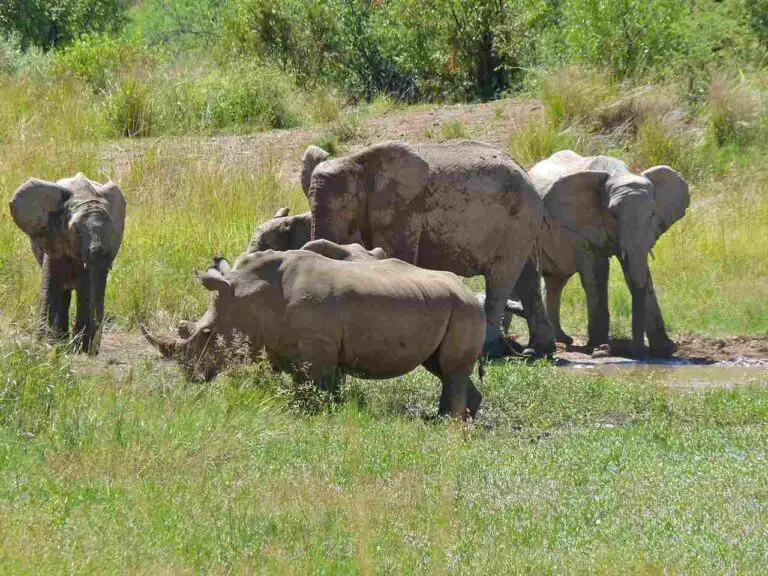9 Causes of Mass Wasting and Their Consequences Discussed
Causes of mass wasting include excessive precipitation, earthquake impacts, severe erosion, volcanic eruption, slope undercutting, building on weak areas, unsustainable agriculture, vegetation removal, and surface mining. They can be broadly categorized into natural and anthropogenic causes respectively.
This article discusses the causes of mass wasting, their mechanisms and consequences, as follows;
-Natural Causes of Mass Wasting
Natural causes of mass wasting are; excessive precipitation, earthquake impacts, severe erosion, and volcanic eruption.
1). Excessive Precipitation: One of the Causes of Mass Wasting
Mass wasting, or mass movement, can be defined as the downhill movement of regolith (loose earth materials) under the influence of gravity.
Any of multiple factors can trigger mass wasting, and one of the most common triggers is excessive precipitation. This process is influenced by several mechanisms and can have significant consequences on landscapes and human activities.
Mechanism of Mass Wasting by Excessive Precipitation
Excessive precipitation affects mass movement mainly by increasing the weight of the regolith, and acting as a lubricant. The mechanism of mass wasting by excessive precipitation comprises of; weight increase, lubrication, and surface tension overriding.
When rainfall saturates the regolith, water in pore spaces and mineral structures can ass significant weight to the material on the slope. This additional weight can make the slope unstable, especially if it establishes a creep effect that oversteepens the slope angles.
Water functions as a lubricant, which reduces friction between regolith particles and rocks. This lower friction allows the material to slide or flow more easily down the slope.
Interestingly, a small amount of water in the soil can aid slope stability due to increased surface tension. However, excessive precipitation can overcome this surface tension effect, leading to mass wasting.

Consequences of Excessive Precipitation
Excessive precipitation-induced mass wasting can have various consequences, including hazards like; landslides, debris flows, severe soil erosion, and sedimentation in water bodies.
Heavy rain can trigger landslides, which are rapid downslope movements of rock, soil, and other particulates and granular materials. These landslides can damage infrastructure, threaten human lives, and alter landscapes.
In regions that have steep slopes and loose materials, intense rainfall can lead to debris flows, which are fast-moving mixtures of water, mud, and cobbles. These flows can be extremely destructive due to their immense weight.
Mass wasting can contribute to erosion, as it removes material from the slope, leading to the loss of soil and land. In many discussions, mass wasting itself is portrayed as a form of erosion and a successive outcome of weathering.
The material that moves downslope due to excessive precipitation often ends up in rivers and streams, where it causes sedimentation. This can negatively affect aquatic ecosystems, by causing water pollution, and may also increase the risk of flooding.
Additional Notes on Precipitation and Factors Influencing Mass Wasting
Precipitation affects mass movement by making the regolith heavier and reducing friction between soil and rock particles. This combination of added weight and reduced friction makes the material more prone to downslope displacement.
Rain causes mass wasting by saturating the regolith and acting as a lubricant. This makes the material easier to mobilize under the influence of gravity.
Four factors influencing mass wasting are; slope angle, material strength, water content, and vegetation. They are further elaborated in the outline below;
1. Steeper slopes are more susceptible to mass wasting because they are more likely to reach the critical angle of repose, beyond which materials start moving downhill.
2. The strength and cohesion of the regolith or rock material, are very important as determinants of mass wasting. Loose, unconsolidated material is more prone to displacement.
3. Excess water, whether from rainfall, snowmelt, or other sources, can make the material heavier and reduce friction, thereby increasing the likelihood of mass wasting.
4. Vegetation can help to stabilize slopes by binding the soil and regulating both water infiltration and moisture content. The removal of vegetation can make slopes more susceptible to mass wasting.
Climate can influence the type and frequency of mass wasting events. Humid climates, which characterized by heavy rainfall and high environmental moisture, are more likely to be associated with mass wasting events like slides and debris flows due to water-saturated slopes. In contrast, drier climates are more prone to rockfall events, especially after early spring when snowmelt and water saturation occur.
2). Earthquake Impacts
Earthquakes are powerful geological events that can trigger mass wasting, also referred to as gravity-driven debris flows. The mechanisms behind this phenomenon and its consequences are crucial to understanding how seismic activity is associated with mass wasting events.
Mechanism of Mass Wasting by Earthquake Impacts
The mechanism of mass wasting by earthquake impact comprises of ground shaking, earth material-dislodgement, and altered hydrological conditions.
During an earthquake, the ground experiences intense shaking and displacement due to the release of tectonic stress. This shaking can dislodge loose materials like soil and rocks, from steep slopes.
Earthquakes can trigger different types of landslides, such as rockfalls, lateral earth spread, and debris slides. The intense shaking compromises the stability of the slopes, causing these materials to rapidly move downslope.
Also, earthquakes can change the pattern of regional or local water flow. They may create new streams, block existing ones with debris from landslides, or rupture human structures that interfere with runoff. Altered water flow can further destabilize slopes by saturating them with water.
Consequences of Earthquakes with Special Reference to Mass Wasting
The consequences of earthquakes within the context of mass wasting include; landscape modification, infrastructure damage, and human impact.
Earthquake-induced landslides can drastically alter the landscape by reshaping slopes and depositing material in new locations. Landslides caused by earthquakes can damage roads, buildings, and other infrastructure. This can lead to the disruption of transportation and utilities.
Mass wasting events following earthquakes can pose a direct threat to human life, by causing injuries or fatalities. Additionally, flood which may result when dams block streams, can exacerbate the human impact.
Lastly, the displacement of rocks, soil, and debris during mass wasting can negatively impact the biotic and abiotic compositions of natural ecosystems, and the overall equilibrium of the environment.
Additional Notes on Mass Wasting and Earthquakes
Mass wasting can be caused by tectonic plate movement, particularly during earthquakes.
The shifting of tectonic plates generates seismic energy that leads to ground shaking and the dislodging of materials on slopes, triggering mass wasting events.
Release of tectonic stress during an earthquake can significantly contribute to landslides and other forms of mass wasting.
3). Severe Erosion: One of the Causes of Mass Wasting
Severe erosion can be a major driver of mass wasting events, and it is important to understand the mechanisms and consequences associated with this phenomenon.
Mechanism of Erosion-Induced Mass Wasting
Erosion-induced mass wasting comprises of weathering and erosion processes, and is driven by other environmental factors like seismic activity, heavy rainfall and slope instability.
Weathering is the process whereby natural and anthropogenic forces collectively referred to as agents of weathering, break down rocks and materials into smaller, unstable pieces. When this weathered material accumulates on slopes, it can increase susceptibility to displacement. Erosion, which usually succeeds weathering, involves the down-slope movement of these materials under the influence of gravity.
As the accumulated materials become increasingly unstable due to weathering, they may lose cohesion and friction that helps keep them in place. This reduction in stability can make the slope vulnerable to agents of erosion which in turn facilitate mass wasting.
Severe erosion can be exacerbated by environmental factors like heavy rainfall or seismic activity. Rainfall can infiltrate the loose material and increase its weight, making it more prone to movement. Seismic activity can agitate the materials, thereby leading to rapid downslope motion.
Consequences of Severe Erosion as a Facilitator of Mass Wasting
Severe erosion leading to mass wasting can have significant consequences, including events like landslides and extensive sedimentation; as well as impacts on the environment and economy.
Landslides are common mass wasting events resulting from severe erosion. These can damage infrastructure, disrupt transportation (by obstructing or damaging transport routes), and pose risks to human life and property.
The materials transported downslope through mass wasting events often end up in rivers and streams, where they contribute to aquatic sedimentation. This can affect water quality and aquatic organisms' survival, while increasing hydrological hazard risk on a local or regional scale.
Severe erosion and mass wasting can significantly disrupt natural landscapes, leading to ecosystem changes and destruction of habitats.
The damage to infrastructure and the cost of mitigating the consequences of mass wasting events can have significant economic consequences and environmental impacts for affected regions.
Additional Notes on Erosion and Mass Wasting/Movement
Erosion causes mass movement by displacing rocks and smaller sedimentary materials that have been broken down into smaller, unstable pieces through the process of weathering.
When these weathered materials accumulate on slopes, they become prone to downslope movement under the influence of gravity. Environmental factors such as heavy rainfall or seismic activity can further trigger this movement.
Mass wasting is a type of erosion that is directly related to gravity. Mass wasting is related to gravity in a cause-effect manner, where gravity acts as a major causative factor for mass wasting.
The main difference between mass wasting and erosion is that not all cases of erosion are directly related to gravity. Erosion can occur due to natural agents like water, wind, or ice, and the material being eroded does not always move downhill. On the other hand, mass wasting occurs when materials move downslope mainly due to gravitational forces.
Erosion mass movement refers to the downslope movement of materials under the influence of gravity, primarily caused by the displacement of rocks and sedimentary particles that have been derived from larger parent materials during weathering. This movement can occur due to the effects of environmental factors like heavy rainfall or seismic activity, and it often results in significant consequences such as landslides, sedimentation, ecological changes, and economic impacts.
4). Volcanic Eruption
Volcanic eruptions can trigger mass wasting events, leading to the movement of rock and debris down the slopes of volcanoes or adjacent areas. Understanding the mechanisms and consequences of volcanic mass wasting is crucial for taking precautionary measures in regions with active volcanoes.
Mechanism of Mass Wasting by Volcanic Eruption
The mechanism of mass wasting by volcanic eruption comprises of seismic wave propagation, lahar formation, and slope weakening.
Volcanic eruptions lead to various phenomena like explosions, significant Earth tremors, and the rapid melting of snow or discharges from crater lakes.
Some of these events can release large amounts of water, which can mix with regolith and ejected volcanic materials. The mixture becomes a lahar, which is a fast-moving volcanic debris flow. Lahars reduce grain-to-grain contact among particles, and make them easily mobilized downslope.

During and soon after volcanic eruptions, landslides may occur on the flanks of volcanoes. The rapid production of rock and other materials during eruptions, combined with the seismic activity, can weaken the stability of slopes, leading to mass wasting.
Consequences of Volcanic Mass Wasting
The consequences of volcanic mass wasting can be significant and far-reaching, and include; infrastructure damage, loss of life and property, and various forms of ecosystem disruption.
Lahars (downslope-displaced pyroclastic slurries) and landslides originating from volcanic eruptions can reach great distances and damage structures in flat areas surrounding volcanoes. This structures can include buildings, roads, and bridges.
Volcanic mass wasting events can pose a direct threat to human life and property. They can lead to casualties, displacement, and the destruction of homes and livelihoods. The materials transported by lahars and landslides can disrupt natural landscapes and ecosystems, leading to habitat destruction and changes in terrain.
One of the ways volcanic mass wasting events alter ecosystems is by contributing to the deposition of sediment in water bodies, which can impact regional hydrology and aquatic life.
Additional Notes on Volcanic Mass Wasting
Volcanoes can cause mass movements, through a combination of earth tremors, rapid production of materials, and the release of large amounts of water during eruptions.
These events can lead to the formation of lahars, which are fast-moving volcanic debris flows. Volcanic landslides can also occur on the flanks of volcanoes due to the seismic activity and instability caused by the eruption.
Volcanic mass wasting is often referred to as "lahars." Lahars are fast-moving mixtures of water, pyroclastic materials, and surficial regolith that are mobilized downslope during and after volcanic eruptions. They are a significant form of volcanic mass wasting and can have devastating consequences on surrounding areas.
-Anthropogenic Causes of Mass Wasting
Anthropogenic causes of mass wasting are; slope undercutting, building on weak areas, unsustainable agriculture, vegetation removal, and surface mining.
5). Slope Undercutting by Excavation: One of the Causes of Mass Wasting
Slope undercutting by excavation, is a significant trigger for mass wasting events, particularly in the form of slumps and rockslides. It is important to understand the mechanisms and consequences of this process in order to achieve optimal land management and hazard mitigation.
Mechanism of Mass Wasting by Slope Undercutting
The two main mechanisms of mass wasting by slope undercutting are; slump formation and rocksliding.
One type of mass wasting triggered by slope undercutting is a slump. A slump can be defined a the (rapid) sliding of coherent rock material along a curved and/or unstable profile.
It often occurs when the base of a mountain or slope is undercut, weakening the stability of the overlying materials. Excavation or erosion at the base of a slope can create this kind of undercutting.
Another outcome of slope undercutting is a rockslide. As the name implies, in a rockslide, rock material slides down a mountain or slope. Excavation, particularly at the base of a slope, can destablize rock overburden and lead to a rapid downward movement.
Consequences of Undercutting-Induced Mass Wasting
Slope undercutting by excavation can have several consequences for the natural environment; as well as for human life and urban infrastructure.
Excavation or erosion-induced undercutting can trigger landslides, including slumps and rockslides, which can result in damage to infrastructure and pose a direct threat to human life and property.
The material dislodged during such landslides can disrupt natural landscapes, leading to habitat destruction and changes in terrain conditions.
Mass movements which originate from slope undercutting can damage roads, buildings, and other structures, affecting utilities, transportation, and overall land use.
Also, once a slope has been undercut, it becomes more vulnerable to future mass wasting events, as the slope's stability has been compromised.
Additional Notes on Slope Undercutting and Mass Wasting
Slope undercutting by excavation weakens the base of a slope, making it less stable. This process can trigger mass movements such as slumps and rockslides.
Slumps involve the sliding of coherent rock material along a curved surface, while rockslides involve the downward sliding of rock material. Excavation or erosion at the base of a slope dislodges materials and causes them to move rapidly downward under the influence of gravity.
Mass wasting, especially in the form of slumps and rockslides, can be a consequence of slope undercutting by excavation (that is; using manmade equipment). When the base of a mountain or slope is undermined through such processes, it weakens the stability of the overlying materials, making the slope more vulnerable to mass wasting events.
Slope undercutting by excavation is a significant trigger for mass wasting events, and it's important to understand its mechanisms and consequences for effective land-resource management and hazard mitigation.
6). Building on Weak Areas
Building on weak areas, such as steep slopes or areas with unstable geological formations, is a common human-induced cause of mass wasting.
An understanding of the mechanisms and consequences of this practice, discussed here, is essential for preventing or minimizing its effects.
Mechanism of Building-Induced Mass Wasting
Factors that facilitate mass wasting within the context of building construction include structural weight influence, alteration of slope stability, and natural drainage changes.
Building structures on weak or unstable areas adds significant weight to the slope. The added load increases the magnitude of gravitational forces acting on the slope materials, which can in turn lead to instability.
The excavation, grading, and construction activities involved in building can alter the natural balance and stability of slopes. These activities may disturb the natural integrity of the slope and its underlying geological formations.
Also, construction often involves altering natural drainage patterns. Changes in water flow, such as the redirection of stormwater runoff, can increase the infiltration of water into the slope. This water infiltration can reduce the slope's cohesion, and trigger mass wasting.
Consequences of Building-Induced Mass Wasting
Building on weak areas can have severe consequences, such as; structural damage, safety risks, and economic costs.
The added weight and alteration of slope stability which are both caused by construction can lead to landslides. These landslides can result in damage to buildings, infrastructure, and the loss of human life.

Buildings and other infrastructure located on slopes that experience mass wasting can suffer significant damage or complete destruction. This can lead to financial losses and displacement of inhabitants.
Mass wasting caused by construction activities can disrupt natural landscapes and ecosystems, causing habitat destruction and changes in terrain characteristics. This can have long-term environmental repercussions.
Building in areas that are prone to mass wasting, increases safety risks for occupants, as well as rescue and emergency response teams in the event of a disaster. Landslides and other mass wasting events caused by building in weak areas can result in significant economic costs for disaster recovery, repairs, and preventive measures.
7). Unsustainable Agriculture: One of the Causes of Mass Wasting
Unsustainable agricultural practices can significantly contribute to mass wasting events, leading to the erosion and degradation of landscapes.
The mechanisms and consequences of these practices must be fully understood in order for sustainable land management and environmental preservation to be carried out.
Mechanism of Agriculture-Induced Mass Wasting
Agriculture causes mass wasting through deforestation, excessive soil disturbance, inadequate soil conservation, and chemical runoff, among other pathways or mechanisms.
In many cases, unsustainable agriculture involves the clearance of forests and natural vegetation to make way for farming. This deforestation not only removes the stabilizing effects of trees and vegetation on slopes, but also exposes the soil to the erosive forces of wind and water.
Unsustainable farming practices, such as over-tilling and unfavorable use of heavy machinery, can disturb the topsoil layer and its structure. This alters soil structure, and makes the soil more vulnerable to causative factors of erosion and mass wasting.
Inadequate implementation of soil conservation and sustainable farming practices, such as terracing, slope fortification, contour farming, and the planting of cover crops, can exacerbate soil erosion and destabilize slopes.
Also, the excessive use of chemical fertilizers and pesticides can alter the composition of the soil and may lead to soil degradation. In some cases, chemical runoff can contaminate adjacent water bodies, affecting aquatic ecosystems.
Consequences of Agriculture-Induced Mass Wasting
Unsustainable agriculture can have ripple effects on the environment and economy, including soil erosion, mass movement, water pollution, loss of biodiversity, and economic losses.
Soil erosion can increase as a result of unsustainable agricultural practices, which can result in the degradation of previously fertile topsoil and reduced agricultural productivity.
The removal of natural vegetation and the disturbance of the soil's structure make agricultural areas more vulnerable to mass wasting events, including landslides and largescale debris flows.
Runoff of agricultural chemicals like fertilizers, and pesticides can contaminate nearby water bodies, leading to water pollution with adverse effects on aquatic ecosystems and regional water quality.
Deforestation and land clearing for agriculture, as well as subsequent degrading effects, can result in habitat loss and threaten local biodiversity.
Soil erosion and mass wasting can have significant economic repercussions by reducing crop yields, affecting agricultural livelihoods, and increasing the cost of soil and water restoration.
8). Vegetation Removal
The removal of natural vegetation from slopes and landscapes can be a major cause of mass wasting events, leading to erosion and instability.
The mechanisms and repercussions of vegetation removal are important factors that must be understood for sustainable environmental conservation and land management.
Mechanism of Mass Wasting by Devegetation
Removal or loss of vegetation causes mass wasting by removing the various mechanisms by which plants prevent erosion, including root binding, rainwater absorption, and protection from surface flow.
Vegetation has a critical role to play in stabilizing slopes. The root systems of shrubs, trees, and grasses bind soil and rock particles together, thereby increasing slope cohesion and reducing erosion risk. When vegetation is removed, this stabilizing effect is lost.
Both small plants and trees absorb rainwater, reducing the amount of water that infiltrates the soil and adds weight to the slope. On the other hand, bare soil without vegetation can become saturated more quickly, increasing the risk of erosion and mass wasting.
Vegetation functions as a barrier to surface water flow. It slows down water runoff, thereby allowing more time for absorption into the soil. When vegetation is removed, surface water can flow more rapidly, transporting away soil and contributing to erosion.
Also, vegetation serves as a natural windbreak, reducing the erosive effect of wind on the exposed soil. In the absence of such vegetation, soil can be more easily eroded by wind, further destabilizing the slope.
Consequences of Mass Wasting by Vegetation Removal
The removal of vegetation can have a range of consequences for the environment and landscapes, including increased erosion, mass wasting, sedimentation, biodiversity loss, and climate impact.
Without the stabilizing influence of vegetation, the exposed soil is more prone to erosion, leading to the loss of fertile topsoil and reduced agricultural productivity.
The loss of vegetation increases the risk of mass wasting events, such as rockfalls and debris flows. These events can damage infrastructure, threaten human life, and disrupt natural ecosystems.
Eroded soil and debris from mass wasting events often end up in rivers and other adjacent water bodies, leading to increased sedimentation. This usually has a negative effect on the sustainability of aquatic ecosystems, and the regional quality of water resources.
The removal of natural vegetation can result in habitat loss, disrupting ecological processes and threatening local biodiversity. Deforestation and vegetation removal can also contribute to climate change by reducing the natural capacity of ecosystems to sequester carbon dioxide.
9). Surface Mining: One of the Causes of Mass Wasting
Surface mining, a form of resource extraction that involves excavating large amounts of soil and rock, can have significant implications with regards to mass wasting events.
The mechanisms and consequences of surface mining within this context, are discussed in the subsections below;
Mechanism of Mass Wasting by Surface Mining
Surface mining leads to mass wasting through pathways like; overburden removal, alteration of slope stability, material disposal, and changes in water drainage.
Typically, surface mining operations begin by removing the overburden, which is the layer of soil, rock, and vegetation that covers the valuable mineral or resource. This process often involves intensive use of heavy machinery, explosives, and excavation techniques, leading to the disturbance and removal of large volumes of earth material.
The removal of overburden can alter the natural balance and stability of sloping areas. This disturbance can expose unstable geological formations or weaken the structure of the slope.

In many surface mining operations, the overburden and waste materials are disposed of in spoil piles, often at high elevation locations or on slopes. These spoil piles are very likely to become unstable due to their looseness, posing a risk of mass wasting hazards.
Surface mining can also alter natural drainage patterns. Changes in water flow trends, such as the redirection of stormwater runoff, can increase the infiltration of water into the slope. This can in turn reduce the slope's cohesion, making it more susceptible to mass wasting.
Consequences of Surface Mining Within the Context of Mass Wasting
Surface mining can have various consequences on the environment and local communities, by facilitating mass movement, erosion, environmental degradation, and economic losses.
Surface mining operations often alter the slope's stability, making it more vulnerable to mass wasting events such as rockfalls and debris flows. These events can damage infrastructure, pose risks to human life, and disrupt biogeochemical cycles.
The removal of overburden and vegetative cover can lead to increased local erosion, resulting in the loss of fertile topsoil and reduction of agricultural productivity.
Also, the disposal of waste materials in spoil piles can lead to environmental degradation. These spoil piles, being highly toxic, may erode and release harmful pollutants into the environment.
Mass wasting events and environmental damage from surface mining can result in significant economic costs for disaster recovery, infrastructure repairs, as well as water and soil restoration.
Lastly, surface mining operations may expose minerals or metals that, when exposed to rain and weathering, can leach into nearby water bodies, affecting water quality and reducing the vitality of aquatic ecosystems.
Conclusion
Causes of mass wasting are;
1. Excessive Precipitation
2. Earthquake Impacts
3. Severe Erosion
4. Volcanic Eruption
5. Slope Undercutting
6. Building on Weak Areas
7. Unsustainable Agriculture
8. Vegetation Removal
9. Surface Mining
